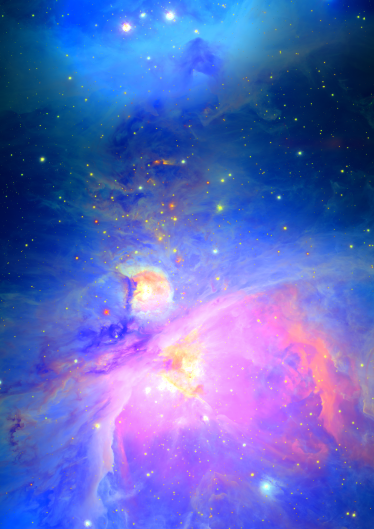Subaru Gallery
Subaru Gallery TOPOrion Nebula (M42)
May 1, 2024
Last updated: September 30, 2025
Last updated: September 30, 2025

Detail
The Orion Nebula (M42) is a star-forming region in the winter constellation. It is located at a distance of 1,300 light-years from Earth and is known as one of the nearest star-forming regions. Due to its large apparent size, the Orion Nebula is easy to find with the naked eye, and many stars can be seen through an amateur telescope.
At the center of the Orion Nebula is a cluster of massive newborn stars called Trapezium that ionize surrounding hydrogen gas by their ultraviolet light. The ionized gas emits a red glow.
See also the near-infrared image of the center of the Orion Nebula, near Trapezium, that was taken in January 1999 when the Subaru Telescope made its first "First Light" observation.
(Credit: NAOJ; Image provided by Michitaro Koike , Masayuki Tanaka)
【Distance from Earth】1,300 light-years
【Instrument】 Hyper Suprime-Cam (HSC)
This image was created by combining three different wavelengths: g-band ( 470 nanometers), i-band ( 760 nanometers), and y-band ( 980 nanometers). Blue, green, and red colors were assigned to these wavelengths respectively.
At the center of the Orion Nebula is a cluster of massive newborn stars called Trapezium that ionize surrounding hydrogen gas by their ultraviolet light. The ionized gas emits a red glow.
See also the near-infrared image of the center of the Orion Nebula, near Trapezium, that was taken in January 1999 when the Subaru Telescope made its first "First Light" observation.
(Credit: NAOJ; Image provided by Michitaro Koike , Masayuki Tanaka)
【Distance from Earth】1,300 light-years
【Instrument】 Hyper Suprime-Cam (HSC)
This image was created by combining three different wavelengths: g-band ( 470 nanometers), i-band ( 760 nanometers), and y-band ( 980 nanometers). Blue, green, and red colors were assigned to these wavelengths respectively.
■Relevant Links
Relevant Tags
Select Category
